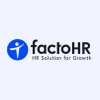What is HR Analytics: Definition, Types and Benefits

Taking decisions that are not based on data, and just on assumptions might land you in the wrong place. The same applies even in the case of human resources.
An organizational decision will impact hundreds of your employees and this is where it is important to take decisions based on insights from HR analytics. When used strategically, HR data analysis can help you understand what’s happening in your organization and what training and encouragement your employees need to achieve business goals.
So, let’s understand what exactly HR analytics is, its benefits, types, importance, and evolution of how it has helped companies to take strategic decisions based on HR metrics and data.
What Is HR Analytics?
HR analytics is the process of gathering, reporting, and analyzing HR data in order to enhance an organization’s employee performance. This process may also be referred to as people analytics, talent analytics, or workforce analytics.
The main objective of using HR data analysis in any organization is to get better insights into human resource processes. You can gather data and then use it to make more informed decisions for your organization as well as the betterment of your employees.
Moreover, it can also help companies determine their employee turnover rate, make an estimate of which employees are likely to leave soon, improve workforce planning, talent acquisition, and a lot more.
Your company might have all the information about their employees, but without analytics, that information is simply raw data. Using the software will provide you with data- backed evidence and patterns in terms of employee performance and engagement. Moreover, it will also help you understand general employee well-being, skill development needs, employee engagement, and more.
Types of HR Analytics

There are four types of HR analytics- Descriptive Analytics, Diagnostic Analytics, Predictive Analytics, and Prescriptive Analytics. Each one of the following types will give unique insights into your workforce.
- Descriptive Analytics
Descriptive analytics helps HRs to gain initial insight into what is happening in the organization. It can be done through firsthand observations and reports. Users can identify patterns and trends by summarizing raw or historical data but cannot make any accurate predictions using the same. This type of HR data analysis can help organizations to assess employee behavior, spot anomalies, compare employee characteristics, identify strengths and weaknesses, etc.
- Diagnostic Analytics
It is the next level of descriptive analytics. It helps organizations to find the cause behind any issue. Similarly, like descriptive analysis, this also uses historical data but focuses more on finding the ‘why’ behind any pattern. For instance, you can find the increasing rate of employee absenteeism using descriptive analytics. By using diagnostic analytics, you can also find the common reasons why your employees are often missing the office.
- Predictive Analytics
In HR predictive analytics, organizations try to forecast what is likely to happen in an organization in the future. This can be done by comparing present and past data and analyzing the gap. This practice helps HRs to make better decisions for the organization while analyzing the risk. For instance, you can predict factors that could lead to employee churn and work on them.
- Prescriptive Analytics
This is the final stage that helps companies to decide what decisions need to be made and what required actions are needed. It uses tools like algorithms, machine learning, pattern recognition, artificial intelligence, and more that help you make a data-driven decision.
Benefits of HR Analytics

- Improved Talent Acquisition
HR analytics tools allow organizations to gain more insights into their hiring process by helping them to understand key metrics like cost per hire, quality of source & hire, application completion rates, and more. HRs can also use the HR analytics software to compare the new candidate applications with their current top performers to shortlist the candidates with similar or distinctive skill sets. This will help you find the best fit for an open position, thus resulting in decreasing employee attrition rate.
Suggested Read: Best HR Analytics Tools for Business in 2023
- Managing Employee Productivity & Performance
With analytics for HR, an organization can clearly understand the contribution of each employee in the form of their performance and productivity to analyze their ROI. Further, you can also analyze collaboration across team members and departments and understand how it can impact employee productivity. For instance, good coordination among remote workers will directly impact their productivity and get things done faster.
- Indulging in Effective Workforce Planning
Predicting future requirements is one of the main benefits of using HR analytics metrics. Organizations can analyze and predict any upcoming workforce demands, especially for critical roles. In addition to this, It can also help you find out if your organization is understaffed or overstaffed, to avoid employee burnout and make optimum use of the current workforce.
- Identifying Skill Gap Analysis
Algorithms in HR analytics tools can allow companies to identify knowledge and skill gaps. You can compare the skills that your employees already possess and the skills you want and prepare a plan to bridge this gap. Rather than looking outside to fill the skills gap with new hires, HRs can analyze the educational background, performance, and experience of existing employees and check whether there are chances of conducting in-house employee training and upskilling the current workforce. Eventually, this would also increase employee engagement.
- Focusing on Employee Upskilling & Development
HR analytics doesn’t limit you to identifying skills gap but also enable you to create relevant training and development programs for your employees. You can know your employees’ preferences if they are more comfortable with traditional learning or on-the-job training. Later, you can also analyze the effectiveness of training programs and determine the ROI spent on them.
- Preventing Any Kind of Workplace Misconduct
Tool for HR helps in determining how employees are being treated in your organization. Are they facing any bias, harassment, discrimination, or any kind of uncomfortable environment in the workplace? To prevent all this, you must conduct timely surveys with complete anonymity and even establish an in-house council consisting of a few HR members and board members to cater to these issues with confidentiality.
What is the Importance of HR Analytics?
- Helps stay ahead of the competition by analyzing and bridging the employees’ skills gap
- Enables data driven HR related decisions based on trends, findings, studies, etc.
- Helps create equitable compensation and benefits packages to avoid any pay disparities
- Reduces recruitment costs by finding upskilling and reskilling opportunities within the existing workforce
- Helps create strategies toward reducing overall employee turnover rate
- You can create a positive candidate experience during the recruitment and onboarding process by giving them a better insight into the company culture and working environment
- Identify inefficient processes and people who aren’t contributing to the organization’s desired goals through data
Evolution of HR Analytics
HR analytics has come a long way today, from the time it was introduced. Now, it can help organizations track talent, people, and workforce analytics with precision and accuracy.
However, HR analytics saw good growth in the late 2000s, when leading companies like Google, Microsoft, IBM, etc., became early adopters. They implemented HR analytics software in their projects and found that it can help them in identifying project shortcomings, better workforce management, taking strategic decisions, and more. In fact, Microsoft even observed a decrease in employee attrition rates in two of its business units after finding that their employees were not being promoted even after being with the company for three years.
Suggested Read: 6 Reason To Invest In HR Services For Organization
What is the Need of HR Analytics for Businesses?
Businesses need HR analytics to make better and more informed decisions in terms of attracting, hiring, and even retaining employees. It also helps businesses to have deeper insights into how their employees are performing and what ROI they are deriving.
Moreover, these can also be used to identify the skills gaps and opportunities for training and development for your employees. Investing in your employees’ skill set will increase employee engagement and reduce the overall employee turnover rate. Eventually, it will help you keep the best talent in your organization and stay ahead of the competition.
Related Categories: Leave Management Software | Grievance Management Software | Applicant Tracking System | Performance Management System | Workforce Management Software
FAQs
What are HR analytics and metrics?
HR analytics is the process of gathering, reporting, and analyzing HR data that can help in improving employee performance and reduce employee turnover rates.
Why are HR analytics important?
It is important to get better insights into your organization in the form of data that can be further used to make informed decisions. It can also help organizations to analyze their ROI in terms of people and processes.
What are the notable trends of HR analytics?
HR Tech & AI and keeping DEI, Diversity, Equity & Inclusion as a priority, etc., are some of the notable trends in analytics for HR. Tech & AI is currently being used in the form of chatbots to implement automation in Employee Self Service portals. Similarly, making an inclusive workplace is another rising trend, where HR analytics can help organizations do mindful talent acquisition and ensure DEI.
What are the 4 levels of HR analytics?
The levels of HR analytics are – Descriptive Analytics, Diagnostic Analytics, Predictive Analytics, and Prescriptive Analytics.
What are the typical sources of data for HR analytics?
Some common sources of data for HR analytics are employee demographic data, social networking information, payroll data, engagement data, performance data, and more.
How can HR analytics value-add to the business strategy?
HR analytics provides business relevant data related to employees and processes that can help stakeholders to understand what’s working for organization and what’s not. Moreover, this data can enable them to create data driven business strategies.
What are the metrics that can be tracked by HR analytics?
Absence rate per manager, employee productivity index, training effectiveness index, employee happiness, overtime expense, etc., are some of the metrics that can be tracked by tool.
How excel can help in HR analytics?
Users can import HR analytics data to Excel and analyze it there. They can also use the Get and Transfer function of Excel to visually understand the data using graphs and charts.
What can regression analysis do in HR analytics?
Regression analysis is a quantitative forecasting technique that helps in measuring the relationship between two variables. For instance, it can be used in HR to determine the salary of a particular position in relation to the required skills and experience.
What is the future of HR analytics?
HR analytics is set to grow exponentially in today’s data-driven work environment. It can help companies with planning and decision-making in terms of workforce, payroll, training & development, employee engagement, and more.
What is the purpose of HR analytics?
The purpose of HR analytics is to provide insights into what is happening in an organization and what strategies can help businesses achieve their goals and maximize ROI.
How do HR analytics differ from HR metrics?
HR metrics help organizations measure the difference between their existing numbers of the organization and the desired business goals. Whereas it help you find the causes behind the difference between your existing numbers and goals.
Is HR analytics the same as data analytics?
HR analytics is rather a more specialized form of data analytics that helps companies to improve employee retention and HR performance level by using analytical processes and employee related data.
Varsha is an experienced content writer at Techjockey. She has been writing since 2021 and has covered several industries in her writing like fashion, technology, automobile, interior design, etc. Over the span of 1 year, she has written 100+ blogs focusing on security, finance, accounts, inventory, human resources,... Read more





























